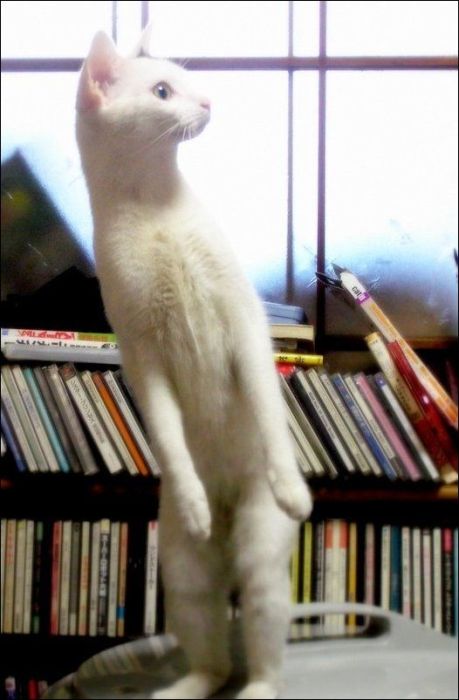|
|
Cute Cat
|
This cat is also known as a calimanco cat or clouded tiger cat, and by the abbreviation 'tortie'. In the cat fancy, a tortoiseshell cat is patched over with red (or its dilute form, cream) and black (or its dilute blue) mottled throughout the coat. Additionally, the cat may have white spots in its fur, which make it a 'tortoiseshell and white' cat; if there is a significant amount of white in the fur and the red and black colors form a patchwork rather than a mottled aspect, in North America the cat will be called a calico. All calicos are tortoiseshell (as they carry both black and red), but not all tortoiseshells are calicos (which requires a significant amount of white in the fur and patching rather than mottling of the colors). The calico is also sometimes called a tricolor cat. The Japanese refer to this pattern as mi-ke (meaning "triple fur"), while the Dutch call these cats lapjeskat (meaning "patches cat"). A true tricolor must consist of three colors: a reddish color, dark or light; white; and one other color, typically a brown, black, or blue. Both tortoiseshell and calico cats are typically female because the coat pattern is the result of differential X chromosome inactivation in females (which, as with all normal female mammals, have two X chromosomes). Conversely, cats where the overall color is ginger (orange) are commonly male (roughly in a 3:1 ratio). In a litter sired by a ginger tom, the females will be tortoiseshell or ginger. Male tortoiseshells can occur as a result of chromosomal abnormalities (often linked to sterility) or by a phenomenon known as mosaicism, where two early stage embryos are merged into a single kitten.
Colorpoint
The colorpoint pattern is most commonly associated with Siamese cats, but may also appear in any domesticated cat. A colorpointed cat has dark colors on the face, ears, feet, and tail, with a lighter version of the same color on the rest of the body, and possibly some white. The exact name of the colorpoint pattern depends on the actual color, so there are seal points (dark brown), chocolate points (warm lighter brown), blue points (dark gray), lilac or frost points (silvery gray-pink), red or flame points (orange), and tortie (tortoiseshell mottling) points, among others. This pattern is the result of a temperature sensitive mutation in one of the enzymes in the metabolic pathway from tyrosine to pigment, such as melanin; thus, little or no pigment is produced except in the extremities or points where the skin is slightly cooler. For this reason, colorpointed cats tend to darken with age as bodily temperature drops; also, the fur over a significant injury may sometimes darken or lighten as a result of temperature change.
|
|









